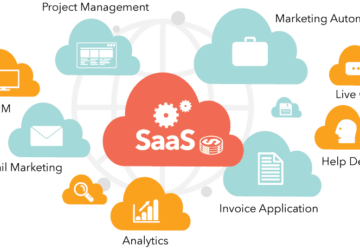Starting up a business always comes with a challenge, and looking for innovative ways to grow the business is one of them. Aside from finding ways to flourish any startup, the most important thing to be considered is keeping the expenses as low as possible. In this case, the use of Social Media is highly recommended. Read More
Once, there were piles of papers, folders, or logbooks that filled an office room. There were memos that an employee received a day after they were signed. Drawers were chock-full of paper bills and coins because there was no other payment option and whispered gossips were a bit too loud. Read More
In today’s data-driven world, businesses are inundated with vast amounts of information. However, raw data alone is not enough to drive informed decision-making and gain a competitive edge. This is where the combination of artificial intelligence (AI) and business intelligence (BI) comes into play. In this blog post, we’ll explore how AI is transforming business intelligence by unlocking valuable insights from data and empowering organizations to make strategic decisions with confidence.
Understanding Business Intelligence
Business intelligence involves the collection, analysis, and visualization of data to inform business strategies and decision-making. It encompasses various tools and techniques that transform raw data into actionable insights, enabling organizations to monitor performance, identify trends, and optimize operations. BI solutions help businesses answer critical questions and drive growth through data-driven decision-making.
The Power of Artificial Intelligence
Artificial intelligence adds a new layer of sophistication to business intelligence by introducing advanced analytics and automation capabilities. AI algorithms can process large volumes of data at incredible speeds, identifying patterns, correlations, and anomalies that might be overlooked by traditional analysis methods. Here’s how AI enhances business intelligence:
- Data Processing: AI-powered tools can process and analyze massive datasets quickly, allowing businesses to extract insights in real-time.
- Predictive Analytics: AI algorithms can predict future trends and outcomes based on historical data, helping businesses anticipate market shifts and customer behavior.
- Personalization: AI enables the creation of personalized insights tailored to specific user roles, ensuring that decision-makers receive the information most relevant to their responsibilities.
- Natural Language Processing (NLP): NLP technology allows users to interact with data using natural language, making it easier to generate insights and reports.
- Automation: AI-driven automation can generate reports, dashboards, and visualizations automatically, freeing up time for analysts to focus on strategic analysis.
Transforming Data into Strategic Insights
AI and BI work in tandem to transform raw data into actionable insights that drive business strategies. Here’s a step-by-step look at how this transformation takes place:
- Data Collection: Data is collected from various sources, including databases, spreadsheets, and external data feeds.
- Data Preparation: Raw data is cleaned, transformed, and organized to ensure accuracy and consistency.
- Data Analysis: BI tools analyze the prepared data to identify trends, correlations, and outliers.
- AI Integration: AI algorithms are applied to the analyzed data to uncover hidden patterns and predict future outcomes.
- Insight Generation: Insights derived from AI-powered analysis are translated into actionable recommendations for decision-makers.
- Visualization: Visualizations and dashboards are created to present insights in a visually appealing and understandable format.
- Strategic Decision-Making: Decision-makers use the generated insights to make informed strategic decisions that drive business growth.
Conclusion
The synergy between AI and business intelligence is transforming the way organizations utilize data. With AI’s ability to process vast datasets and extract valuable insights, business intelligence becomes more powerful and dynamic. By harnessing the potential of AI-driven BI, businesses can gain a competitive advantage, make smarter decisions, and adapt to the ever-changing market landscape. As AI and BI continue to evolve, organizations that embrace these technologies stand to unlock new opportunities and thrive in the data-driven era.
In today’s rapidly evolving business landscape, the term “digital transformation” has become a buzzword. But what exactly does it mean, and how is it shaping the future of businesses across industries? In this blog post, we’ll delve into the concept of digital transformation, its significance, and the role that business technology plays in driving this transformative journey.
Understanding Digital Transformation
Digital transformation refers to the process of leveraging advanced technologies to fundamentally change how a business operates, interacts with customers, and delivers value. It’s not just about adopting new tools; it’s about reimagining business models and processes to thrive in the digital age. From small startups to large enterprises, businesses are embracing digital transformation to remain competitive and relevant in an increasingly tech-driven world.
The Importance of Digital Transformation
The rapid pace of technological advancement, changing consumer behaviors, and market disruptions are compelling businesses to embrace digital transformation. Those that do not adapt risk becoming obsolete or losing market share to more agile competitors. Digital transformation enables businesses to enhance efficiency, improve customer experiences, and unlock new growth opportunities.
Key Elements of Digital Transformation
- Modernizing Processes: Embracing automation, cloud computing, and data analytics to streamline operations and decision-making processes.
- Enhancing Customer Experiences: Utilizing technology to create personalized and seamless interactions, from online shopping to customer service.
- Data-Driven Insights: Leveraging data analytics to gain valuable insights, identify trends, and make informed business decisions.
- Agile Work Environments: Implementing technologies that facilitate remote work, collaboration, and adaptability.
- Innovation and Disruption: Exploring emerging technologies such as AI, IoT, and blockchain to drive innovation and disrupt traditional business models.
The Role of Business Technology
Business technology serves as the foundation of digital transformation. The tools and solutions that enable organizations to undergo this transformation include:
- Cloud Computing: Cloud platforms offer scalability, flexibility, and cost savings, enabling businesses to store and access data, applications, and services remotely.
- AI and Automation: Artificial intelligence and automation streamline processes, optimize workflows, and improve decision-making.
- IoT Connectivity: The Internet of Things connects devices, enabling real-time data collection and analysis to enhance operational efficiency.
- Data Analytics: Advanced analytics tools provide insights from large datasets, guiding strategic decision-making and identifying growth opportunities.
- Collaboration Tools: Communication and collaboration platforms empower teams to work together efficiently, regardless of geographic location.
Conclusion
Digital transformation is not a one-size-fits-all approach; it’s a journey tailored to each business’s unique goals and challenges. Embracing digital transformation requires commitment from leadership, a willingness to adapt, and a strategic approach to technology adoption. Businesses that successfully navigate this transformation are poised to reap the rewards of increased competitiveness, improved customer satisfaction, and a stronger position in the ever-evolving business landscape. As technology continues to evolve, embracing digital transformation becomes an imperative for businesses aspiring to shape a successful future.






